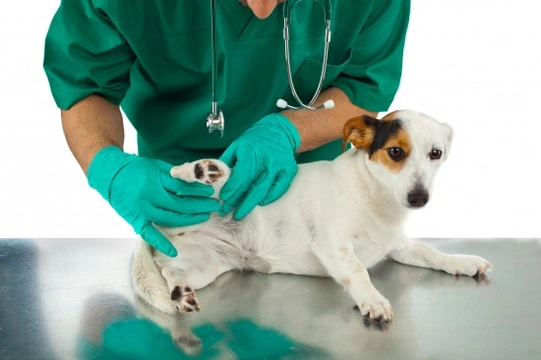
Skin Growths, Lumps and Bumps on Dogs
Even if your dog has very short fur, it is a good idea to brush and groom them regularly so that you can examine them and keep an eye out for anything that might be amiss. Dogs, just like people, may have lumps and bumps on parts of their bodies, such as moles, skin tags and other minor changes in the surface of the skin, as well as of course potentially developing cysts and tumours.
This is particularly the case as dogs age, and with age, new moles, growths and lumps can develop, which it is important to keep an eye out for.
Read on to learn about some of the most common lumps, bumps and growths that can develop on the dog, and how you can identify them at home.
Moles
Dogs with moles are very common, just as most people have at least one little mole somewhere on their bodies! Moles on dogs are particularly common on dogs with darker pigmentation in their skin, although of course due to their fur, your dog of any colour might have several moles that you are not aware of.
Moles can appear anywhere on the skin, and may be either flat and without texture, or hard, raised or textured. If your dog has moles, make a note of where they are on the body, but assuming that they do not grow or change over time, do not worry about them.
The development of new moles, or changes to existing moles such as in the texture, shape or size is something that you should keep an eye out for, and ask your vet to double check if you have any concerns. Exposure to the sun can prompt the growth of new moles or change the structure of existing moles, so try to ensure that your dog is protected from strong sun, and wears a sunscreen if necessary!
Skin tags
Skin tags are also common on dogs, and as dogs age, the chances are that they will develop more and more of them. Skin tags can look and feel a little bit like moles or warts, but they are usually much more flexible, as well as being narrower and longer. They are usually small in size and rather rubbery, as they are literally, loose tags of the skin itself.
It is not definitively known why skin tags develop on dogs (or people), but there is often a genetic element in play regarding their development. Skin tags are harmless in and of themselves, and do not require treatment or removal.
However, depending upon their location on the body, they might run the risk of being knocked, scratched or torn, so if this occurs or if they are located somewhere where they are likely to become a problem, your vet might recommend that they are removed.
Benign growths
The vast majority of dogs with skin tags or moles will have no problems with them at all, and they are classed as benign, or non-cancerous. However, it is important to keep an eye on any lumps and bumps on the skin, and go to the vet promptly if they start to change, such as in terms of shape, size, or texture. Skin growths and tumours are among the slowest growing and most treatable of all cancers and growths, and are generally benign, or non-harmful; however, left untreated, cancerous melanomas can be deadly, which is why it is vital to get your vet’s opinion if anything begins to change.
Pedigree dogs are, for unknown reasons, much more likely to develop growths and tumours than mixed breed dogs, and the risk of developing growths and tumours in dogs of any breed or type increases exponentially as the dog ages.
Malignant growths
Hopefully, your dog will go through their whole life without ever having to deal with a malignant growth, or a cancerous growth that has the potential to spread. Among malignant tumours, there are a great many different types and presentations in terms of skin growths, some of which will remain localised and are easily removed, and others, which are very aggressive and can soon spread to other areas of the body.
The most common form of skin tumours in dogs are known as mast cell tumours, which again, have a huge range within their subset, running from the totally benign to the very malignant and fast growing type. Not all skin tumours look the same either, but one thing that all mast cell tumours have in common is that they can grow large very quickly, but also, sometimes reduce in size on their own too.
The reduction in size does not mean that the cancer is in remission or will go away on its own, however; if you have any doubts or concerns about any type of growth on your dog’s skin, take them along to the vet as soon as possible for diagnosis and treatment, if required.



